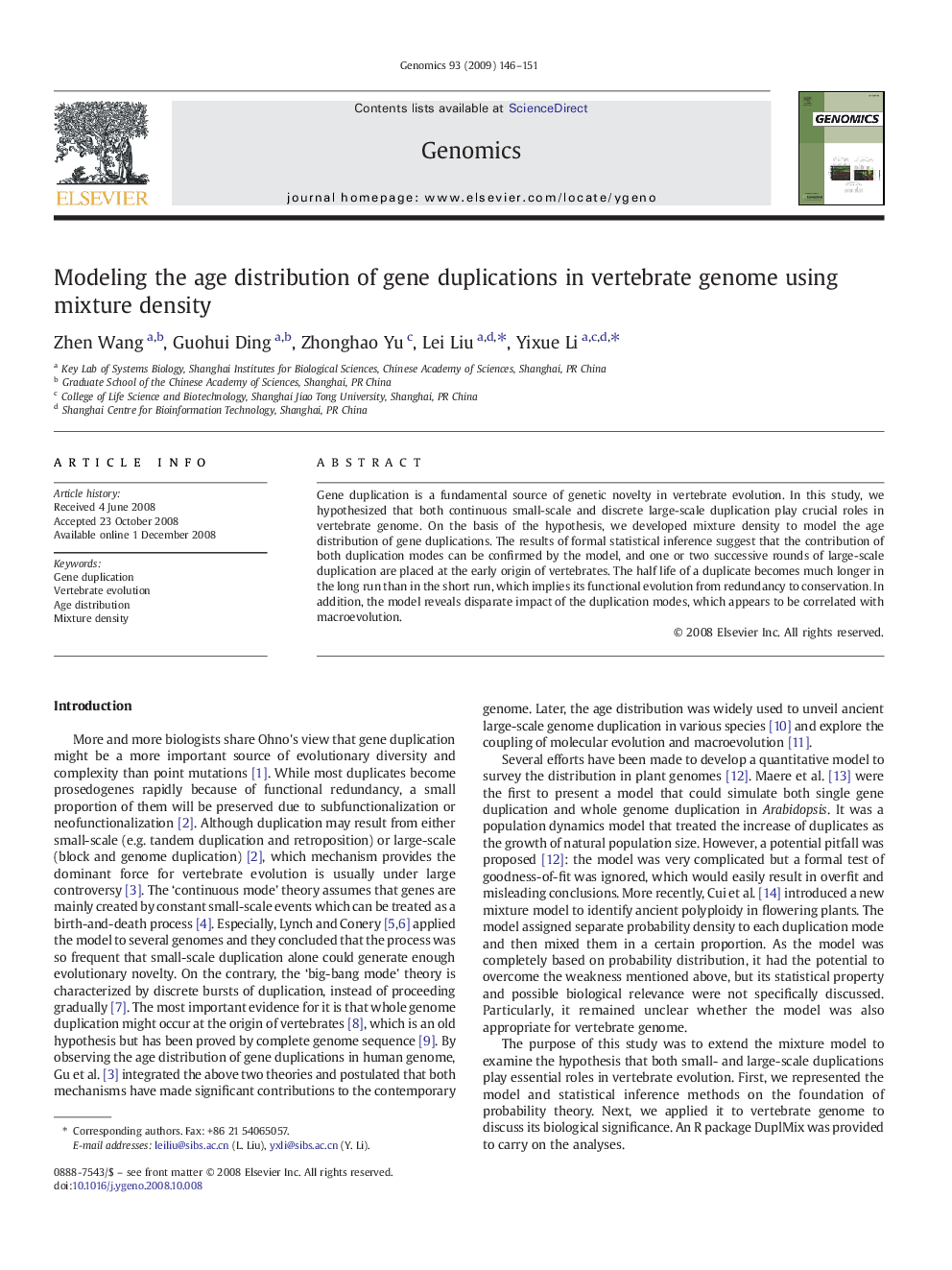| Article ID | Journal | Published Year | Pages | File Type |
|---|---|---|---|---|
| 2821283 | Genomics | 2009 | 6 Pages |
Gene duplication is a fundamental source of genetic novelty in vertebrate evolution. In this study, we hypothesized that both continuous small-scale and discrete large-scale duplication play crucial roles in vertebrate genome. On the basis of the hypothesis, we developed mixture density to model the age distribution of gene duplications. The results of formal statistical inference suggest that the contribution of both duplication modes can be confirmed by the model, and one or two successive rounds of large-scale duplication are placed at the early origin of vertebrates. The half life of a duplicate becomes much longer in the long run than in the short run, which implies its functional evolution from redundancy to conservation. In addition, the model reveals disparate impact of the duplication modes, which appears to be correlated with macroevolution.
